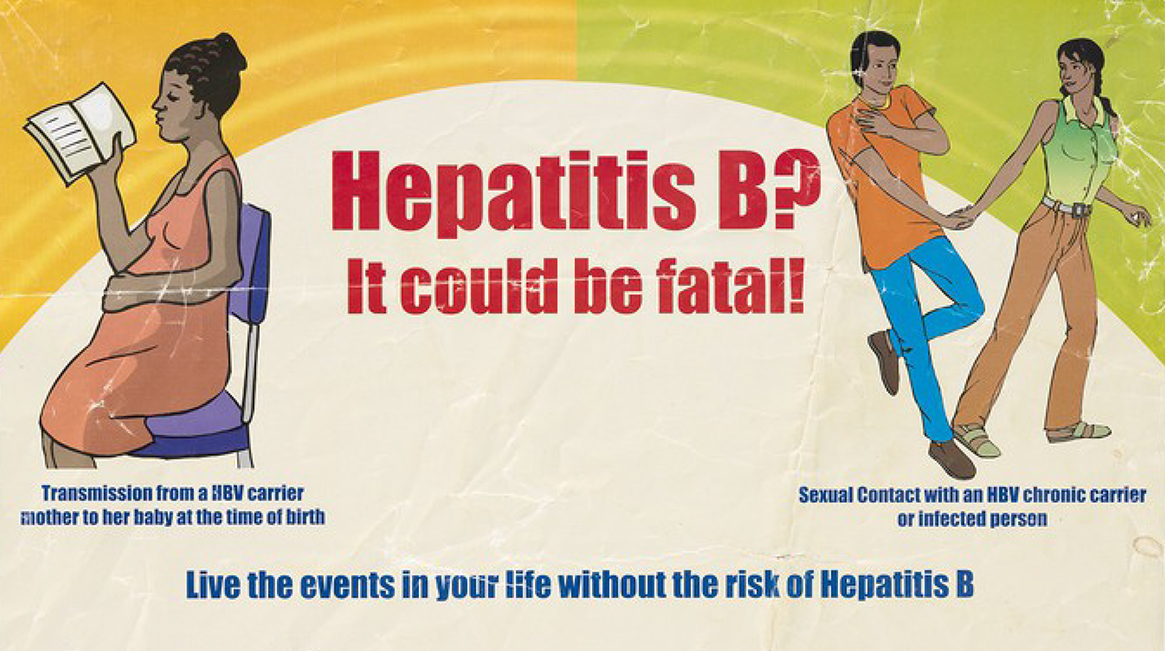
Nora Schmit was shortlisted for the MRC Max Perutz Science Writing Award 2019 for the following article on her PhD research on predicting the impact of treatment for hepatitis B infection on preventing liver cancer in The Gambia.
What’s the first thing that comes to your mind when you think of cancer prevention? Maybe you’re thinking of not smoking or maintaining a healthy weight – great strategies to reduce your chance of getting cancer.
But did you know that the hepatitis B vaccine, introduced in the 1980s, has long protected children in many parts of the world from developing one of the most common and deadliest cancers later in life?
Although most people have no symptoms when they first become infected, the hepatitis B virus is the leading cause of liver cancer worldwide. Large-scale efforts to tackle the virus using vaccination have been hugely successful in preventing infections in children. Despite this remarkable achievement, hepatitis B infections are still very common and nearly a million people die from its consequences every year. With around 6% of all people living in Africa currently infected, the death toll there is expected to rise even further.
But while a liver cancer diagnosis is nearly always fatal, treating the infection is possible with the same drugs that work against HIV. So why do so few people receive these drugs, when over half of all liver cancer deaths globally are preventable?
Long overlooked
For one, there’s the social aspect. Hepatitis B has received far less attention and financial support from the international community than HIV. The lack of awareness means that 9 out of 10 people don’t know they are infected, and lifelong treatment remains inaccessible for most.

Then, there’s the biology. If you get infected with hepatitis B, you might be completely fine and never realise – or you could develop a chronic infection that progresses to liver cancer 40 years later. The virus can stay silent in the body for decades, slowly damaging the liver, but not everyone goes on to develop life-threatening liver disease. This means that only a small proportion of infected people actually need treatment. The hard, and costly part is identifying who that is.
This is where my research comes in
While predicting your individual risk of getting sick and prescribing treatment is your doctor’s job, my role as an epidemiologist is to predict the risk of liver cancer of entire populations and suggest ways to reduce it.
Think about it like a weather forecast: with measurements on the current weather and knowledge of its local patterns, computer simulations can predict the most likely forecast for tomorrow. Similarly, epidemiologists develop mathematical models to calculate how many people could become infected and fall ill in the future, using our understanding of transmission and disease patterns as the backbone of the model.
In my research, I try to predict the future number of liver cancer cases in The Gambia. This small West African country has been at the forefront of hepatitis B research and prevention for more than 30 years, leading landmark collaborative studies on vaccination and treatment. And since the people who will develop liver cancer in the decades to come are those that are already living with hepatitis B today, I first had to look back into the past to reconstruct the spread of hepatitis B in this region.
Back to the future
So how do I know how Gambian people became infected and developed liver disease in the past? I travel back in time through the scientific literature. By sifting through thousands of publications, I have found valuable pieces of information that tell us a little bit about the history of hepatitis B in West Africa. My model, then, allows me to recycle this previously collected data by assembling the disjointed pieces of evidence in a meaningful way.
Drawing on decades of research and bringing together experience from the field, the lab and clinical observation, I can go beyond any individual study’s original purpose, fill in gaps in the data, and paint a picture of the hepatitis B epidemic and liver cancer in The Gambia in the past, as well as in the future. Further down the line, this helps me predict how many liver cancer cases could be prevented by diagnosing and treating people.
Good news though: things are already changing. Mine is one among a growing number of research projects seeking to address this silent epidemic. The World Health Organization has set the aim of eliminating viral hepatitis, marking the beginning of a new era in hepatitis B control. My hope is that combining the success of vaccination with better access to treatment could make this a reality, radically changing the future of liver cancer and saving millions of lives.

Nora Schmit is a PhD student within the Department of Infectious Disease Epidemiology at Imperial’s School of Public Health and her research is supported by the Medical Research Council.
Image credit: Jon Barlow for the Medical Research Council.